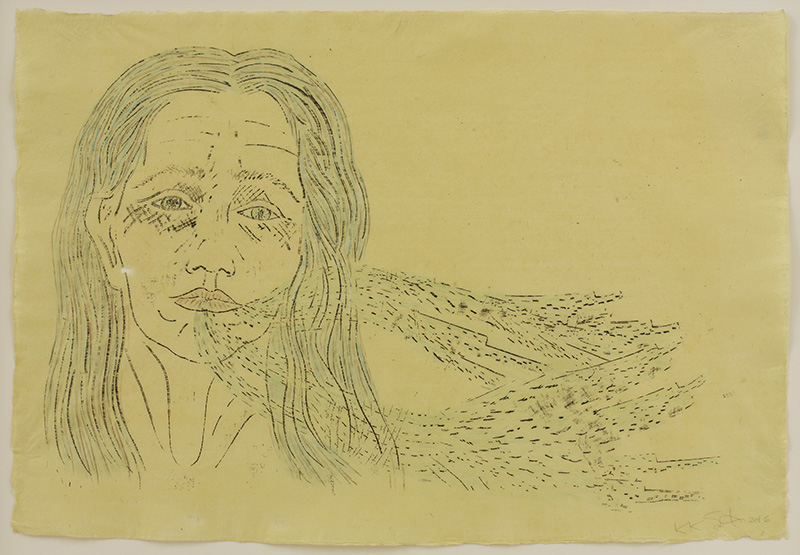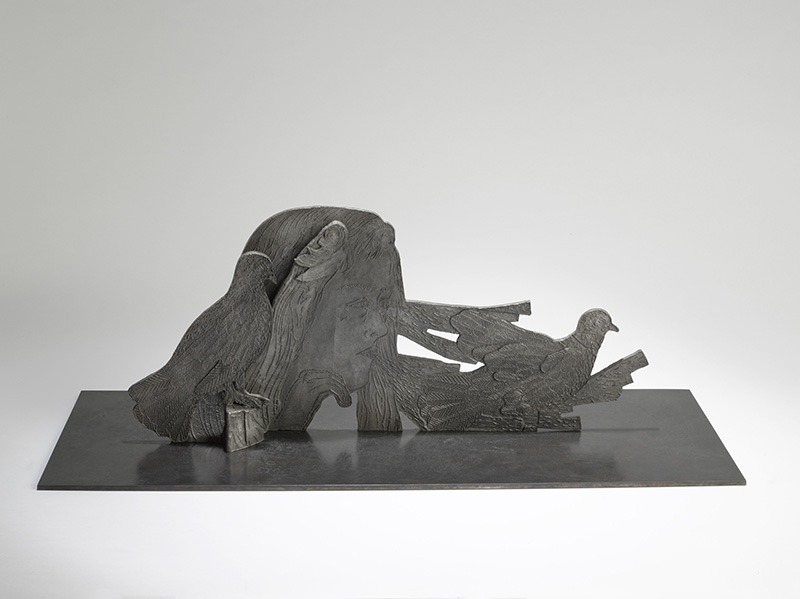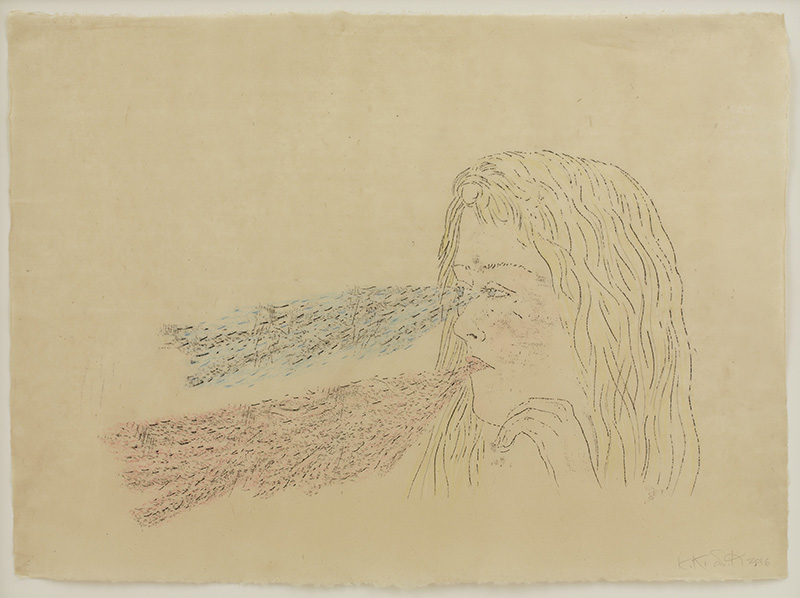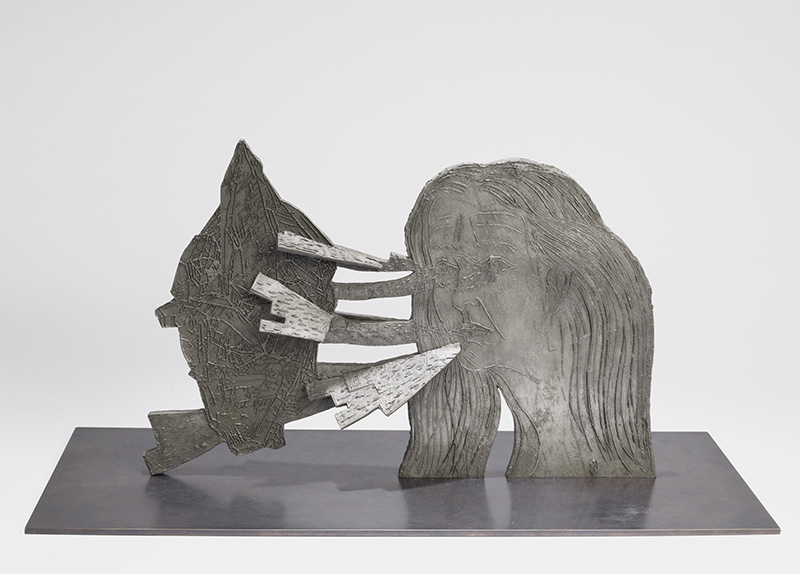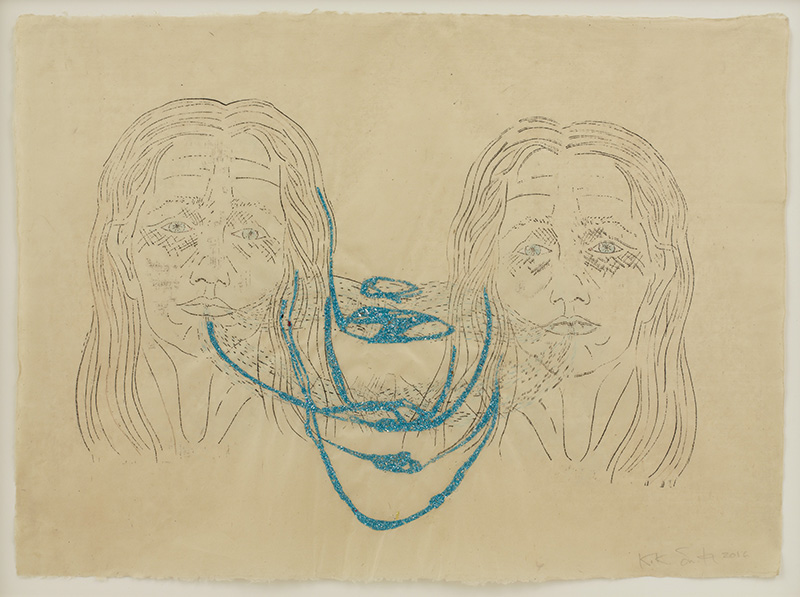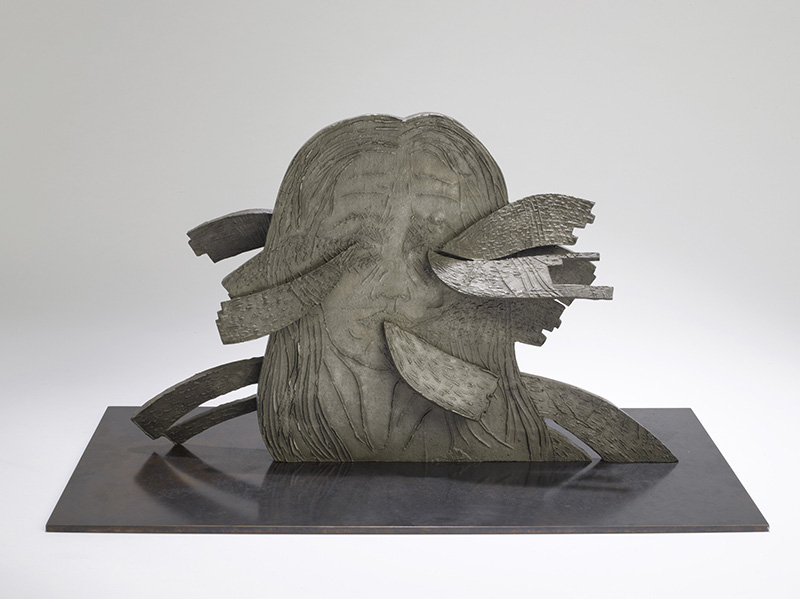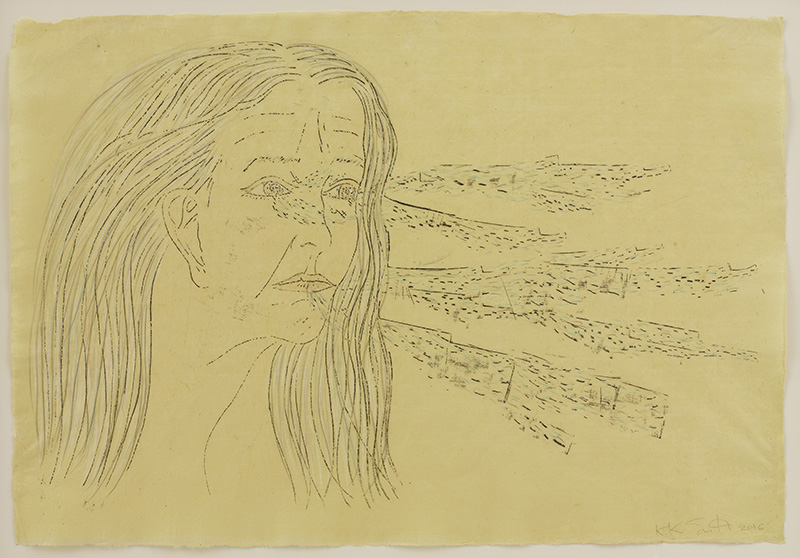ART-PREVIEW:Kiki Smith-Quest
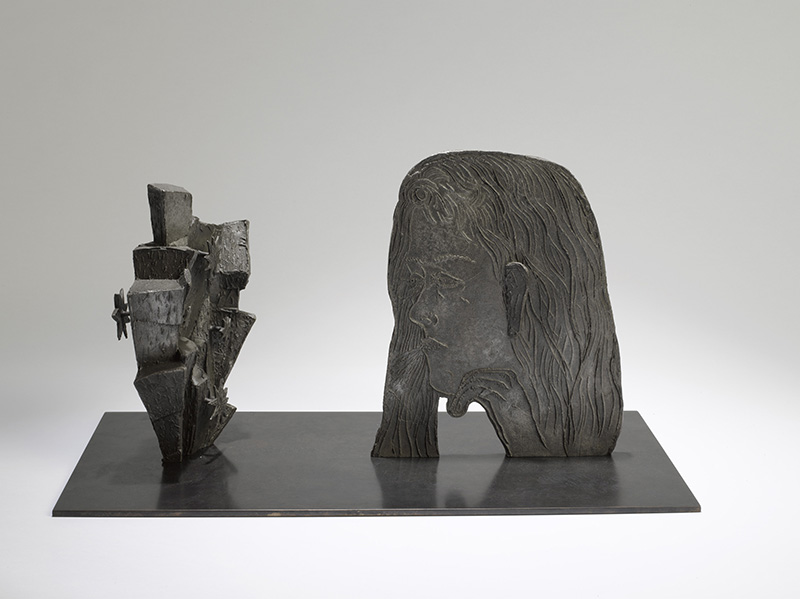 Kiki Smith’s work resists both modern and classical notions of beauty, trading in the easily fetishized exterior of the body for the interior, exposing the inner life of the flesh. Often, Smith draws upon themes of death, sexuality, and vulnerability in her work with the concept of the feminine at its heart. Later in her career, Smith explored famous women of history, from Lilith to the Virgin Mary to Little Red Riding Hood, in continuation of her refashioning of typical representations of women in myth and literature.
Kiki Smith’s work resists both modern and classical notions of beauty, trading in the easily fetishized exterior of the body for the interior, exposing the inner life of the flesh. Often, Smith draws upon themes of death, sexuality, and vulnerability in her work with the concept of the feminine at its heart. Later in her career, Smith explored famous women of history, from Lilith to the Virgin Mary to Little Red Riding Hood, in continuation of her refashioning of typical representations of women in myth and literature.
By Dimitris Lempesis
Photo: Galleria Raffaella Cortese Archive
When Conceptual and Minimalist Art were at their height, Kiki Smith unapologetically made work related to bodily presence and sensual, subjective knowledge of nature and emotion. Deciding against the heavy, industrial materials of sculptors like Donald Judd, Richard Serra, or her father, Tony Smith, Smith uses ephemeral materials such as paper, wax, glass, and ceramics. In Kiki Smith’s solo exhibition “Quest” are on presentation drawings and sculptures of female faces from 2016. The titles of the drawings “Gift”, “Sense”, “Utterance”, “Flurry”, “Seek”, “Pathology”, “Capture”, “Tilt”, “Hoping”, “Future Sense” and those of the sculptures “Send”, “Surge”, “Receive”, “Transmission”, “Conductor” and “Foreseen” suggest actions in progress. The actions suggest an exchange, from the interior to the exterior, and vice versa, that doesn’t reveal the truth about our being or the destiny that awaits us, by raising questions about how we experience our body and the world, as Smith herself stated: they are drawings of heads talking and seeing and receiving and hearing and transmitting and wondering in the world. In works of both mediums, the lines are broken and interrupted, highlighting a fragility and dematerialization that insistently reminds us of the fleeting nature of the human condition. Their narratives combine figurative representation and the cold rigor of formal abstraction to make suspended figures emerge in ethereal and timeless atmospheres. The faces, although they appear fragile, vulnerable and melancholic, reveal a tenacious life force and symbolize the nature of human consciousness. These slender and lonely faces live indefinitely, in a world where rationality and intuition, physicality and invisibility are united. The daughter of sculptor Tony Smith, Kiki Smith grew up in New Jersey. As a young girl, one of Smith’s first experiences with art was helping her father make cardboard models for his geometric sculptures. This training in formalist systems, combined with her upbringing in the Catholic Church, would later resurface in Smith’s evocative sculptures, drawings, and prints. She enrolled at Hartford Art School in Connecticut in 1974 but dropped out eighteen months later. Around 1978, she joined Collaborative Projects, Inc. (Colab) in New York, an artists’ collective devoted to making art accessible through exhibitions outside commercial gallery settings. It was during this period that she made her first artworks, monotypes of everyday objects. Virtually self-taught, Smith describes herself as “a thing-maker.” In the 1980s, Smith literally turned the figurative tradition in sculpture inside out, creating objects and drawings based on organs, cellular forms, and the human nervous system. This body of work evolved to incorporate animals, domestic objects, and narrative tropes from classical mythology and folk tales. Life, death, and resurrection are thematic signposts in many of Smith’s installations and sculptures.
Info: Galleria Raffaella Cortese, Via Stradella 4, Milan, Duration: 30/11/17-28/2/18, Days & Hours: Tue-Sat 10:00-13:00 & 15:00-19:30, www.galleriaraffaellacortese.com
